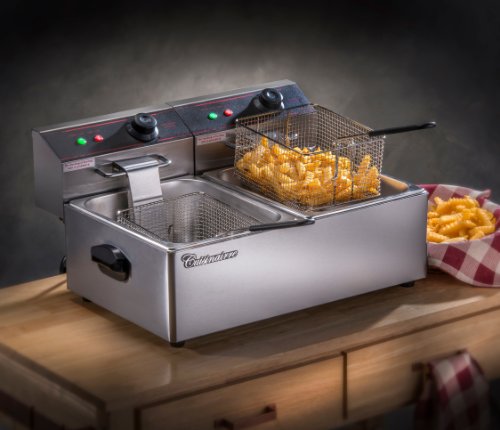
The commercial fryer is an easy-to-use machine that, if maintained and cleaned correctly and efficiently, is a long-lasting way to make delicious food without incurring overly-expensive production costs — and for many businesses, it’s as much a staple as the oven or freezer. In this article, we will provide a brief overview of commercial fryers and brands on the market, as well as when or where they might be most beneficial in your restaurant operations.

Gas or Electric?
Before looking too deeply at a commercial fryer, you should know that there is a distinction between gas and electric fryers. For a long time, gas fryers have been very popular, but as gas prices have risen, electric fryers are becoming increasingly more widespread because they are considered more cost-efficient to operate. If gas prices in your areas are surging and outstripping energy costs, an electric fryer may be the more fiscally sensible choice for your restaurant. Gas fryers heat up faster, but electric fryers are considered more advantageous when it comes to oil recovery (how quickly fryers recover between oil cycles), oil heating efficiency, and portability. But to further complicate matters, while certain fryers are best for certain food preparations, not every type of fryer is available in both gas and electric.
With that in mind, here are the main types of commercial fryers.
Open-Pot Fryers
Open-pot fryers are called “open-pot” because the heating area of the fryers is unobstructed. If you have a gas model, the fry pot will be heated from the outside, but electric models contain a heating element that is actually immersed inside the oil. They’re easy to clean and great for fryer baskets, as you can shake them in order to reduce the debris collected in the sedimentation area. The sedimentation area of the open-pot fryer is deep and narrow. The preparations that work well with this type of fryer are lightly breaded foods, such as fries, fried fish, and hash browns. Frymaster’s H55 Gas Fryer is a solid example of an open-pot fryer, and is, perhaps, one of their most well-known products in the restaurant industry, renowned for its energy efficiency and ease-of-use. The downside to open-pot fryers tends to be their use in more heavily-breaded foods — an open-pot fryer would need more attention in terms of cleaning and maintenance when used with these kinds of preparations.
Tube Fryers
Tube fryers are heavy-duty, and they work well with many different preparations that involve heavy-frying and battering, such as onion blossoms, battered fish, cheese sticks, hot wings, poppers, and fries. They are referred to as “tube” fryers because the heating mechanisms are tube-shaped and affixed permanently inside the frying vat. They are not easy to clean because of this structure and will frequently require additional tools or elbow-grease, but they are certainly efficient and have a wide-sediment zone, which means that they are handle sediment very well. An example of a tube fryer is the Anets 14” Tube-Fired Gas Fryer — a cost-effective model capable of handling both high and low sediment preparations.
Flat-Bottomed Fryers
Flat-bottomed fryers work well with liquid, battered foods that require a delicate touch. This type of fryer does not have a sediment zone to accumulate particles, as it fries food that floats near the oil’s surface. While this is difficult to clean, it is vital for several preparations, including funnel cakes, tortilla chips, donuts, tempura, taco shells, and other fragile foods. Food particles may settle at the bottom and blacken or scorch the food that is being fried due to the lack of sediment zone, but that can be avoided with attentiveness while cooking and frequent cleaning. An example of a flat-bottomed fryer is the Frymaster YSCFC Flat-Bottom Fryer.
Each of the different types of fryers is specifically designed to fry preparations that require either heavy battering, light breading, delicate frying, or more. Knowing the difference between the fryers will help you decide which to purchase, and you may find that one fryer is suitable for a wide range of the items on your menu, or, conversely, you may discover that you need to purchase more than one unit to accommodate your offerings. But as you search for the right equipment for your back-of-house, also check how available replacement parts are for the models you are considering. More popular Frymaster and Garland models are almost certain to have replacement parts available for years through OEM suppliers like 24/7 Restaurant Parts, whereas more esoteric or dated models may find their pool of replacement parts dry up before you need it.







